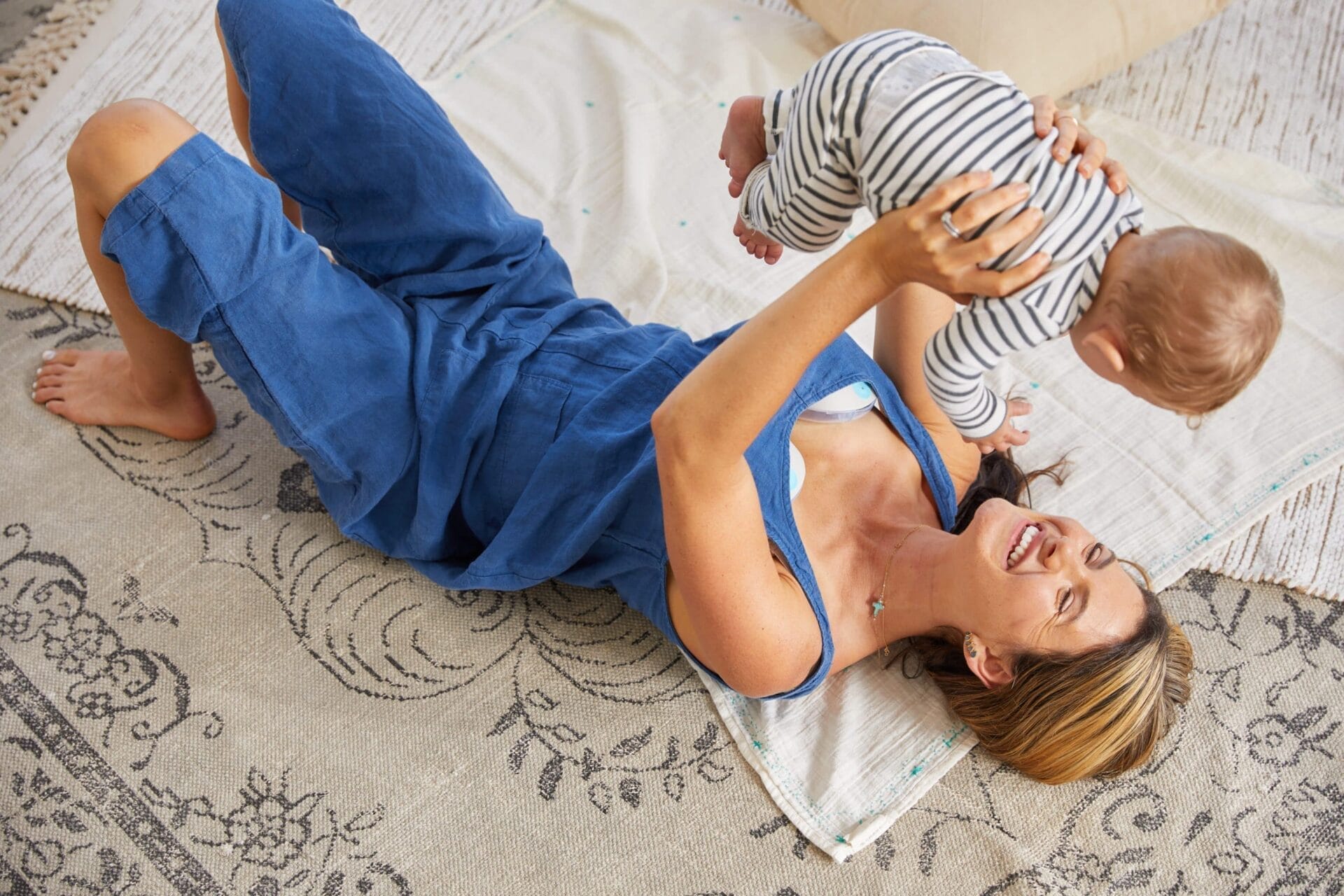We are proud to say that these posts are not sponsored. Our editorial team of Bobbie moms and writers personally select each featured product. If you buy something through our links, we may earn an affiliate commission, at no cost to you.
-Tonilyn Hornung & Shira Page, RN, NP, CLC
Babies come with lots of things. There are bottles, bassinets, and burp cloths, but as a mom who’s been there, don’t forget to add a portable breast pump to your list of necessities. A portable pump gives you the freedom of movement you need when you’re a busy mama to a newborn. Whether you need to finally eat your breakfast at lunchtime, answer a quick email, or hold your crying little one, a portable breast pump takes care of you so you can take care of your baby.
- What is a portable breast pump
- How do I choose a portable breast pump
- Best Portable Electric Breast Pumps
- What makes a breast pump portable
- What is the difference between a manual pump and an electric pump
- What’s the difference between a portable pump and a hospital-grade pump
- Do hands-free pumps work
- Can you sleep wearing a breast pump
- New hands-free electric pumps are pricey. Are they worth it?
- What’s the most common problem noted from the use of a portable bWhat’s the most common problem noted from the use of a portable breast pump
- Do portable pumps come with all the pumping accessories
- Are portable breast pumps safe
What is a portable breast pump
Jadah Parks Chatterjee, RN, International Board-Certified Lactation Consultant, and Bobbie Medical Advisor says this type of pump is battery operated, wireless, and designed for you to utilize without hands. A portable breast pump was made for a mom on the go—and let’s be real, what mom isn’t constantly taking care of all the things at all of the times?
How do I choose a portable breast pump
While choosing a portable breast pump can feel overwhelming, Chatterjee reassures that a portable pump is a nice addition to your feeding journey and most beneficial once your milk supply has been established. She suggests looking for a pump that fits your budget—which includes supplies like flanges, storage bottles/bags, and cleaning materials. Shira Page, RN, NP, CLC adds “Everyone will respond differently to different pumps, there is no one size fits all. That’s why its important to understand the unique aspects of each option”
In order to help narrow down your list, we’ve assembled the 10 Best Portable Breast Pumps of 2024. Read on to find the one that’s your “breast fit.”
Best Portable Electric Breast Pumps
1.Spectra S1 Plus Breast Pump
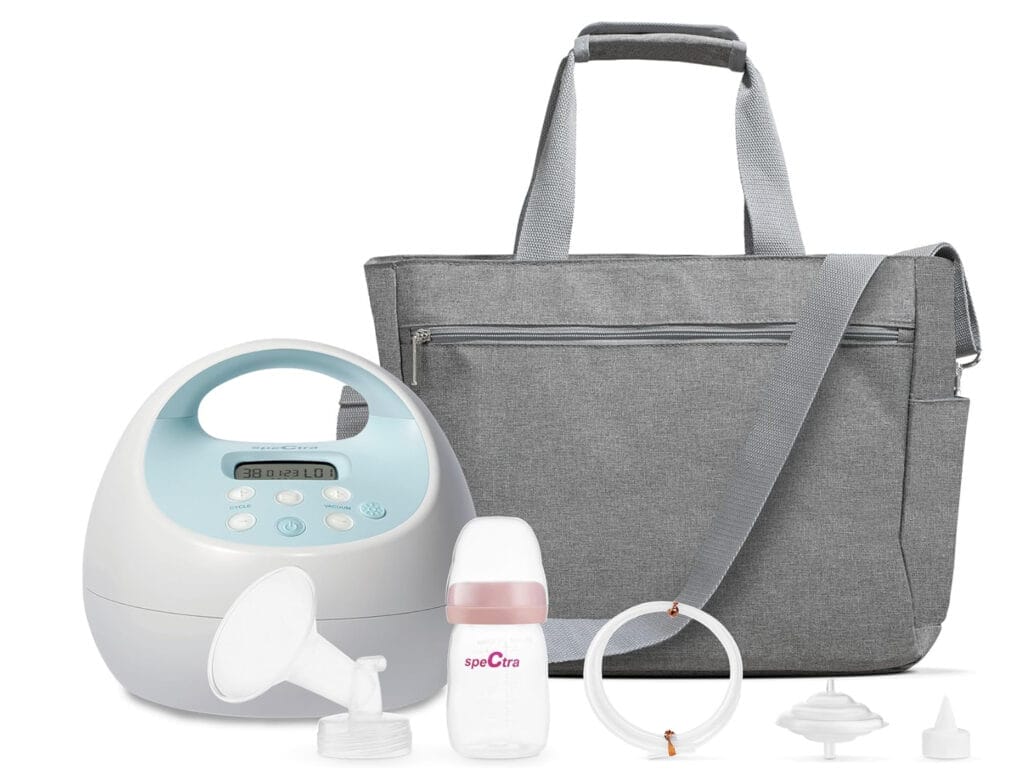
While the size of the S1 may not be exactly what you envision when you think of a portable pump, the S1 delivers reliability in a way that can be hard to find in a smaller package. Similar to the popularity and efficacy of the Spectra S2, this pump provides all the same benefits with portability and the ability to be recharged.
Pros:
– Hospital strength suction
– Advanced massage and expression settings
– Reliability
– Effective for milk removal for most users
– Easy availability of new parts at local retailers
– Available through most insurances with a small upcharge
Cons:
– Over 2 lbs, needs to be carried or put in a backpack to be portable
– Not discreet
If your insurance doesn’t have the S1 a very similar option is the Motif Luna Battery Operated Breast Pump
2. BabyBuddha Portable Breast Pump

This nursing pump is so small, that the pump can be hung around your neck so you can be completely hands-free. The easy-to-use trackball on the pump allows you to choose your preferred suction mode. This is a viral favorite and comes in at a more affordable price than many portable pumps on the market. If you want to make it more discreet, Be My Breast Friend offers a number of hacks for combining portable cups with the Baby Buddha.
Pros:
– Small and very light
– Strong suction
– Available through some insurances with a minimal charge (~$10)
– Affordable
Cons:
– Suction is too strong for some individuals
– Battery life dwindles with use
– Loud motor
3. Momcozy M9 Hands Free Breast Pump
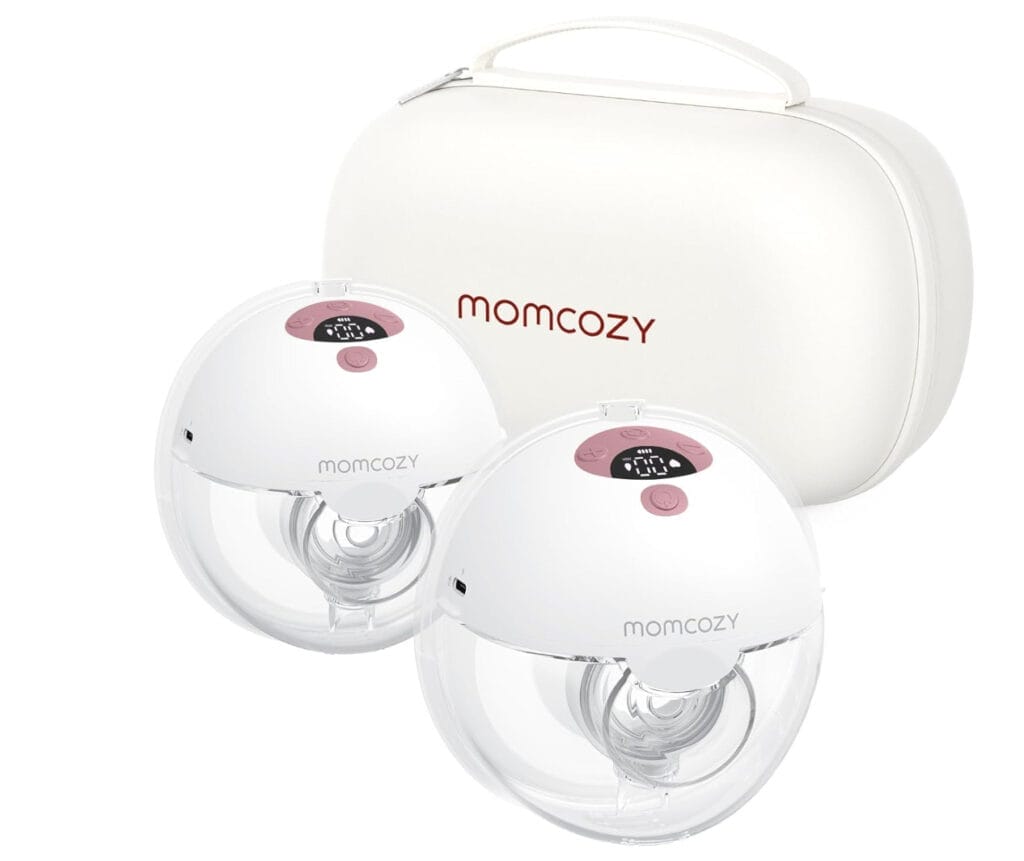
Increasingly becoming a favorite among parents. This cordless pump has 2 modes and 9 different pumping levels, you’ll be able to find one that works best for you and your milk production. The accessories are made of “soft-food grade silicone” and are way simple to clean, Oh, and let’s not forget the fancy LCD screen and a low noise pump that makes it easy to use anywhere.
Pros:
– soft silicone parts
– More affordable than some portable pumps
– Comes with a carrying case for all parts and cords
Cons:
– Doesn’t have an app to track milk output like some other portable devices
– Can be hard to see milk output in the pump, while pumping
– Lower suction strength than hospital grade pumps
4. AnnaBella Breast Pump
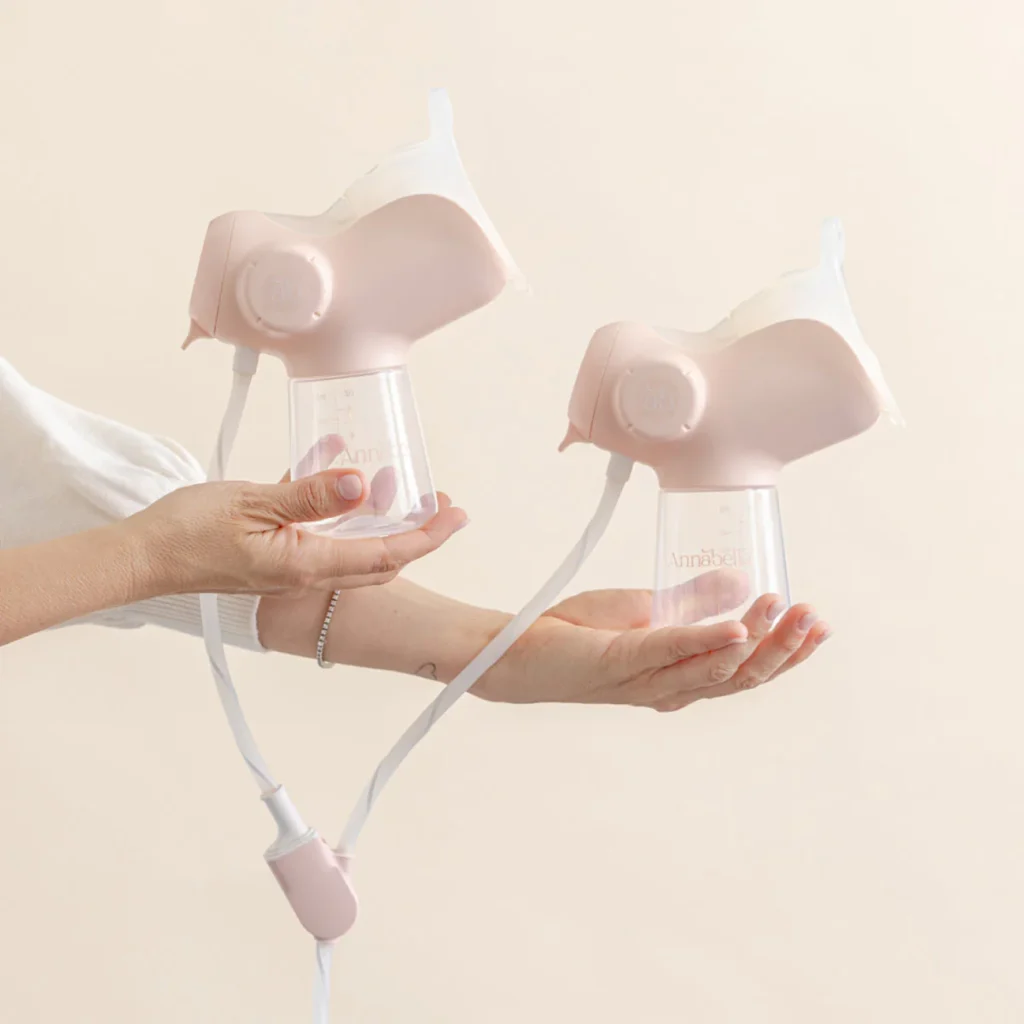
Available as a double or single pump, this is a new pump with an extremely unique design. Instead of the typical sucking motion of other pumps, this pump has a “tongue-simulating technology” which mimicks a baby’s natural sucking motion to stimulate milk production.
Pros:
– Great option for parents who don’t respond to traditional pumps
– Built-in night light
– Claim of increased milk production by 50%
Cons:
– Limited availability through insurance
– Pump flange is bulky and may be difficult to fit into certain pumping bras
– Tongue-like technology may not be for everyone
5.Perifit Hands Free Breast Pump
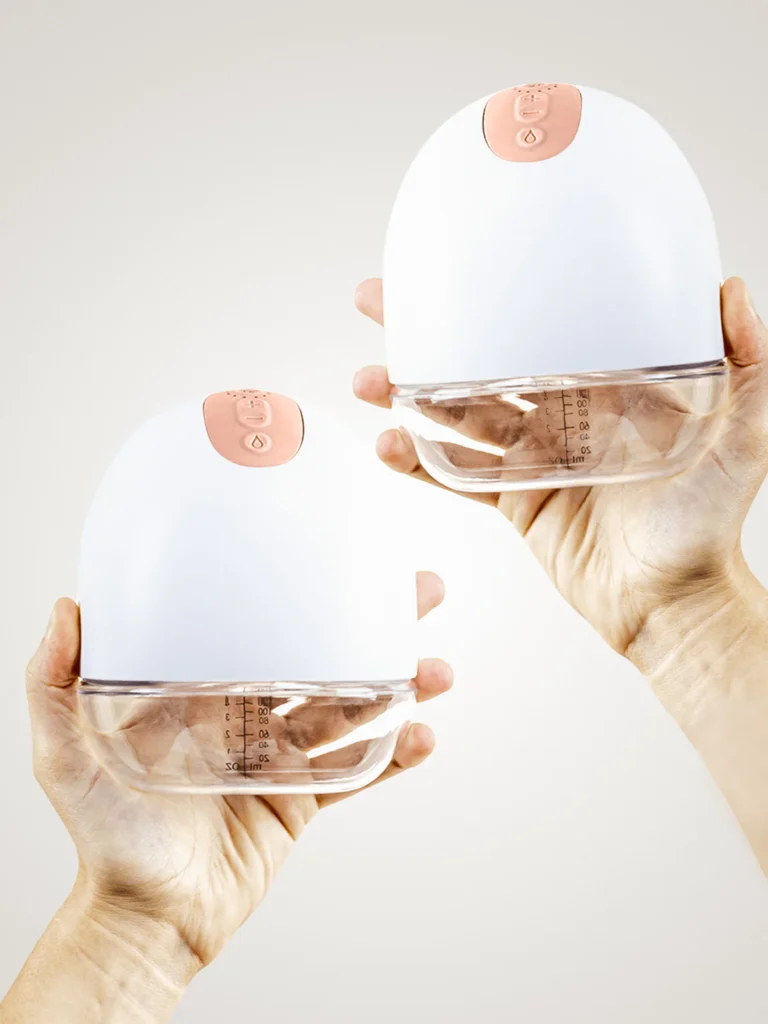
Another newer option on the market, this is a cordless pump similar a la the Momcozy, Elvie, and Willow. The Perifit falls in the mid-range for price and we are not yet seeing it available through many insurers. It has soft silicone flanges which come out from the pump for easy washing. It also comes with a free bra extender to fit the portable pump in a nursing bra which is a convienant addition. This is another great option on the market for those looking for a cordless pump.
Pros:
– Hospital grade suction
– Quiet
– Easy onboarding with app
– Dishwasher friendly parts
Cons:
– Limited availability through insurance
– Only comes with 1 flange size (others available for purchase). Need to know flange size in advance of purchase. – Accessories only available through the Perifit site
6.Willow Go
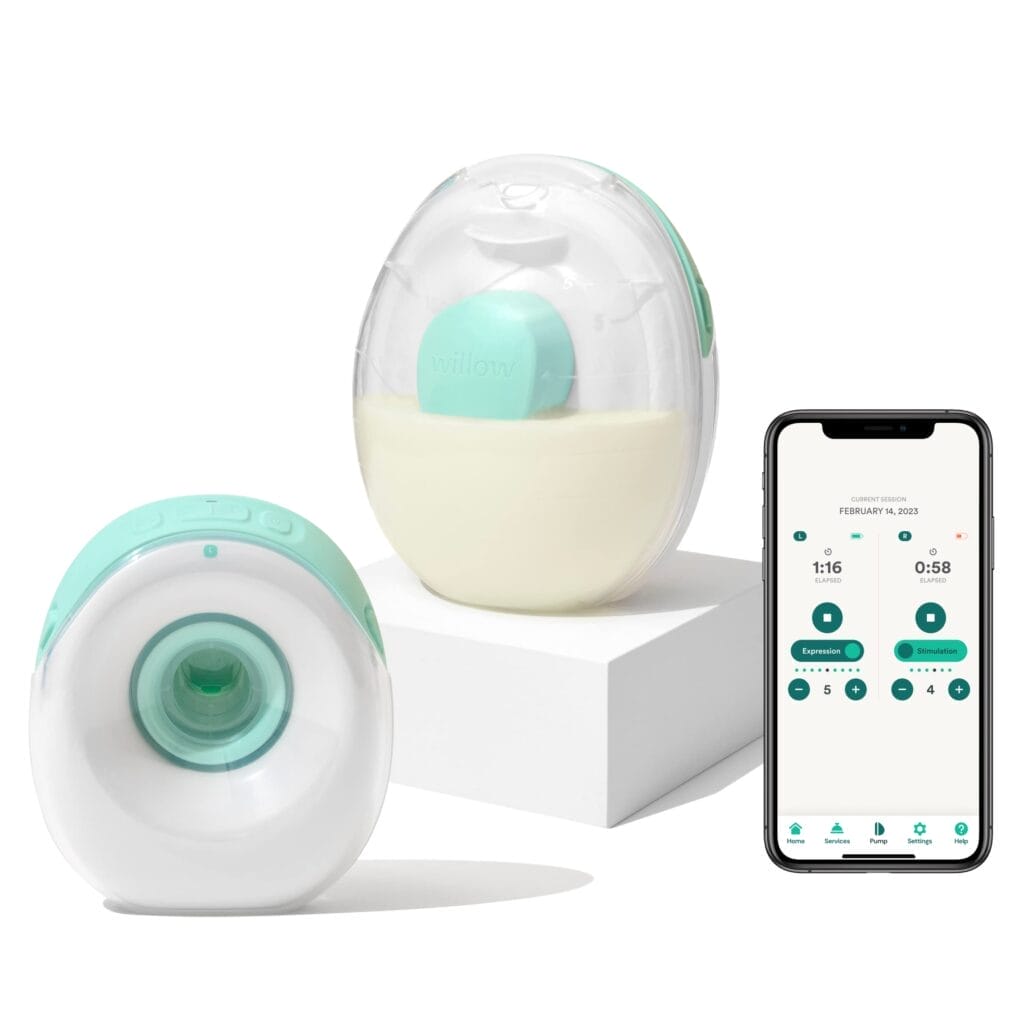
This “all-in-one” pump has no tubes or hanging batteries which means, you have a full range of motion. So, get ready to practice your yoga handstands while pumping—no joke. This is the lower price point Willow product and is available on many insurance-covered pump vendors for an extra charge.
Pros:
– Offers hospital-grade suction up to 280 mmHg
– Access to expert content via their app which also tracks milk and onboards you to the pump
– Easy to clean with fewer parts than some other wearable devices
Cons:
– May feel bulkier and be more visible than some other portable pumps
– May not be a good fit for everyone for maintaining milk supply
– Replacement parts can be pricy
7.Elvie Stride
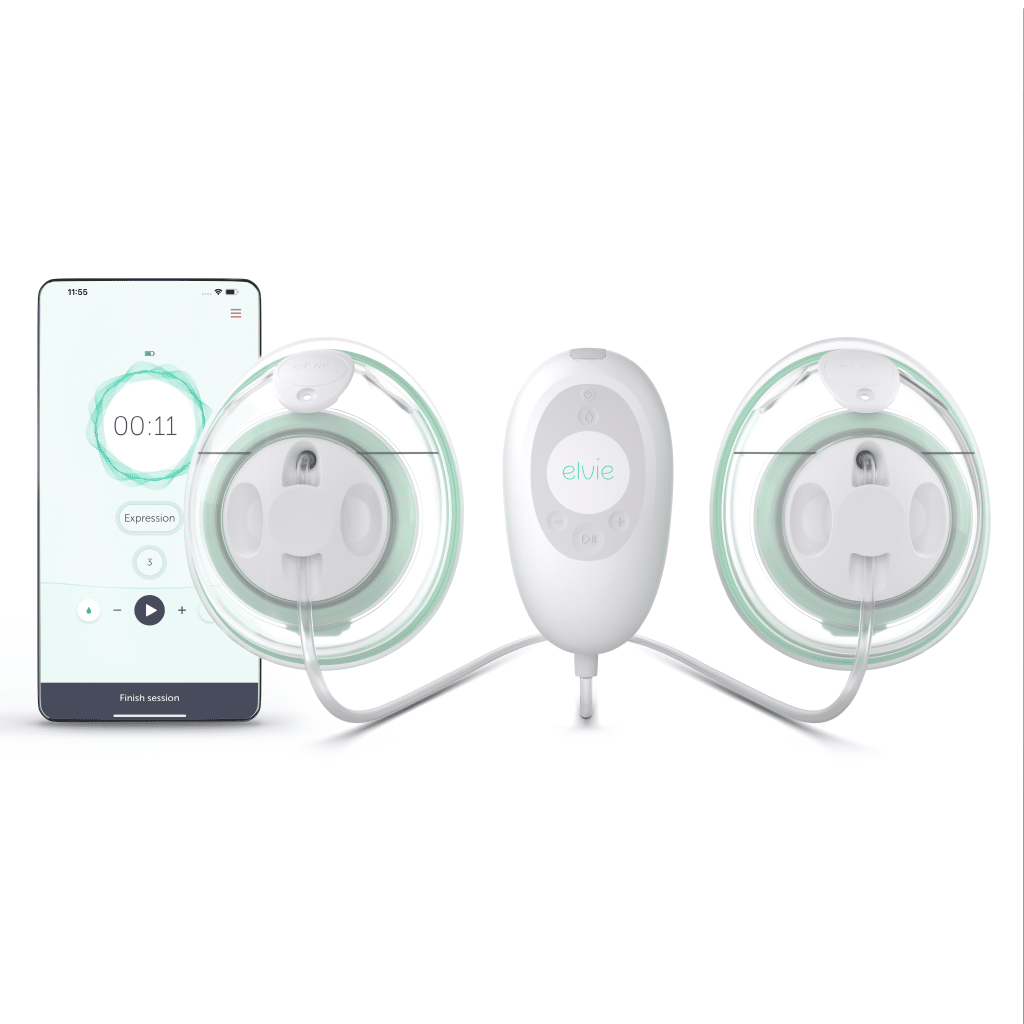
Elvie Stride is a hands-free, hospital-grade performance electric breast pump that is portable, liberating you from sockets and wires. By combining a hospital-grade motor with noise reduction technology, this pumping powerhouse always blends into background noise for true discretion.
Pros:
– Hospital grade suction up to 300 mmHG
– Lightweight compared to some other wearables
– Elvie app monitors milk output and you can adjust settings from your phone
Cons:
– Not cordless
– Some users report concerns about battery life
– Included flange sizes may not work for everyone and Elvie doesn’t have as many fit options as some other brands.
What makes a breast pump portable
The defining factor here is that a portable pump provides you freedom of movement. “It doesn’t need to plug into a wall charger during use,” Chatterjee explains. Using a portable pump lets you pump in your car while you’re running errands or when you need to quickly put away your baby’s burp cloths during nap time. Chatterjee says what makes the pump portable is the ability to utilize high power, large capacity (lithium-ion) battery or a USB adapter to charge the battery.
What is the difference between a manual pump and an electric pump
The main difference is that a manual pump works without electricity. These are hand-operated and can only be used on one breast at a time. An electric pump is operated with battery power or by plugging it into a power outlet.
What’s the difference between a portable pump and a hospital-grade pump
Chatterjee explains that a hospital-grade pump has more power, and more suction/speed functions than a portable pump—thereby expressing more volume of milk in a shorter period of time. Hospital-grade pumps are sometimes cumbersome when packing for an overnighter to grandma’s and need to be plugged into a wall outlet to work. (It should be noted that this is the preferred option for parents pumping to establish and increase milk supply, exclusively pumping parents or parents with babies in the NICU, Chatterjee says.)
When it comes to portable pumps, they’re lighter, smaller, and have a little less pumping power. “This type of pump is a great option once your milk supply has been established, somewhere around the third/fourth week postpartum,” Chatterjee says. She goes on to say that a portable pump is a fantastic option for road trips, long work commutes, and offer more options for discreetly pumping in public.
Do hands-free pumps work
Yes, hands-free pumps work! Giving you that flexibility to pump whenever and wherever your pumping schedule decrees (this writer has pumped on a cross-country plane flight), Chatterjee says they’re a great alternative or addition to a traditional electric pump. “The challenge is that some parents don’t respond well to portable options, and they can be expensive! A great option is to use a hospital grade pump for establishing and maintaining supply and a hands-free pump for less flexible pumping moments,” says Page.
Can you sleep wearing a breast pump
While it may be tough keeping your eyes open when listening to the rhythmic whirring of your breast pump, it’s not recommended to catch some Zs while pumping. Chatterjee says pumps are designed to be utilized for 15-20 minutes and pumping for longer can create discomfort and excessive tension on your nipples and areola. Another reason to stay awake is that not all pumps have spill-proof bags/bottles. A change in posture can cause those to leak or even worse empty completely and Chatterjee adds, “…I know you are not interested in losing not even a half drop of milk!”
New hands-free electric pumps are pricey. Are they worth it?
Chatterjee says to start with your feeding plan: What’s important to you? How long would like to provide your baby food from your body? Would you like to pump? Your next step? Work with your partner or support team and build a plan that suits you—this includes a financial plan. Bobbie Mom, Jo, says all her doctors recommend the Elvie. “Apparently the surgeons here at the hospital use it while they’re doing surgery,” Jo says. She adds that it’s the closest to a hospital-grade pump but without being plugged into the wall.
If it’s definitely part of your feeding plan to be on the go, then Chatterjee suggests placing this gift on your baby registry. “Consider if you purchased the most expensive portable pump, with all the bells and whistles, you’d spend less than $100 a month during the first year of your baby’s life,” she says.
What’s the most common problem noted from the use of a portable bWhat’s the most common problem noted from the use of a portable breast pump
Portable pumps have a heap of benefits like freedom of movement, being able to multi-task while making milk, and dealing with a lightweight pump. Chatterjee shares that the most common problems are:
- the power is less than an electric pump
- leaking milk
- short battery life
- the pump flange not fitting uncomfortably in the hands-free bra
If you have concerns or questions about engorgement, plugged ducts, and/or mastitis, Chatterjee suggests using a hospital-grade pump. “The stronger suction rate has shown better (quicker) outcomes to resolving excessive milk volume concerns and mitigating things from becoming
more concerning,” says Chatterjee.
Do portable pumps come with all the pumping accessories
While portable breast pumps come with their own parts like breast shields, phalanges, and bottles in which you can directly pump your breast milk, some parts may not be so portable.
Bobbie mom, Elizabeth, was surprised to learn the portable electric pump she purchased wasn’t as conducive to out-in-the-world pumping. After a friend loaned her some Freemie cups to use instead of her big conspicuous bottle attachments, the lightbulb went off. “I bought a conversion kit from Amazon, and that was really when it occurred to me I could pump in more places with cups I could tuck into my shirt,” Elizabeth says. These smaller cups allowed her to pump in public places more discreetly. “Don’t get me wrong, between the tubes and the sound of the pump motor it was obvious what I was doing. But I didn’t feel exposed at all,” she says. If you feel your portable pump isn’t quite as portable, Elizabeth suggests searching out conversion kits and generic pump parts on places like Amazon. To this point, Bobbie mom, Shira, assures that many people have successfully figured out this pumping part problem and to remember Google is your friend when it comes to searching out resources. Shira says, there are also great CLC (Certified Lactation Counselor) led Instagram accounts like @bemybreastfriend that can help. And Elizabeth reminds it’s worth checking with your HSA/FSA provider because supplies for pumping are generally reimbursable.
Are portable breast pumps safe
When considering that these pumps attach themselves to a super sensitive area, Chatterjee assures that portable pumps are safe enough to use throughout your breast-pumping journey.
A portable pump can be packed up quickly in a diaper bag so you can stick to your pumping schedule when out and about or while trying to get your toddler to eat his carrots at home. It’s a wonderful way to support your desire to keep your kiddo fed while keeping up with a life that isn’t slowing down anytime soon.

